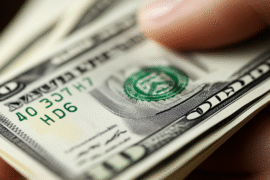This article may contain references to products or services from one or more of our advertisers or partners. We may receive compensation when you click on links to those products or services. Nonetheless, our opinions are our own.
The information presented in this article is accurate to the best of our knowledge at the time of publication. However, information is subject to change, and no guarantees are made about the continued accuracy or completeness of this content after its publication date.
- How Pharmaceutical Tariffs Influence Drug Costs and Market Supply
- Economic Impact of Pharmaceutical Tariffs
- Market Disruptions and Drug Availability Challenges
- Budgetary Implications for Healthcare Systems and Consumers
- Practical Approaches to Offset Rising Medication Costs
- For individual patients:
- Institutional Considerations and Investment Outlook
- Frequently Asked Questions
- Final Remarks
- Recommended Reads
How Pharmaceutical Tariffs Influence Drug Costs and Market Supply
In an increasingly interconnected pharmaceutical economy, the pricing and availability of medications are often shaped not only by production factors but also by international trade policies. Pharmaceutical tariffs—taxes placed on imported medicines and raw ingredients—have emerged as a significant influence on healthcare expenditures and drug access. Although generally aimed at stimulating domestic production, these tariffs can ripple through supply chains, tightening availability and increasing prescription drug costs for healthcare providers, insurers, and end consumers.
Economic Impact of Pharmaceutical Tariffs
Pharmaceutical tariffs create an added cost layer that affects the flow of medicines across borders. When such import duties are imposed, companies may absorb the cost temporarily, but over time, the pressure to maintain margins increases prices at the distribution and retail levels. The result is higher costs for hospitals, pharmacies, and ultimately, patients.
Tariffs commonly affect:
- Finished pharmaceuticals (e.g., antibiotics, cancer therapies)
- Active Pharmaceutical Ingredients (APIs), most of which are sourced internationally
- Raw materials used in drug formulation and packaging
A large share of active ingredients used in U.S. manufacturing is imported from India and China, so tariffs on these imports can significantly disrupt pricing models and production timelines.
| Tariff Area | Likely Outcome |
|---|---|
| Import tax on finished drugs | Direct price increases at the consumer level |
| Tax on APIs or materials | Delays or reductions in domestic drug output |
| Administrative cost of compliance | Supply chain slowdowns and increased overhead |
The financial ramifications are most visible in price-sensitive therapeutic areas such as generic medications, where even slight cost upticks can influence coverage decisions and availability.
Market Disruptions and Drug Availability Challenges
Another consequence of pharmaceutical tariffs is supply chain fragility. These import restrictions can discourage manufacturers and distributors from engaging with high-risk international partners. The result is a contraction in sourcing options, leading to supply volatility. Even minor disruptions can trigger critical shortages for pharmaceuticals with limited domestic production alternatives, such as oncology drugs or injectable generics.
In recent years, the U.S. Food and Drug Administration (FDA) has reported a rise in drug shortages linked to manufacturing constraints and upstream trade issues. According to FDA data, over 180 medications faced scarcity in 2023, with several tied to API sourcing limitations from abroad.
Contributing factors include:
- Limited domestic capacity to replace international suppliers
- Regulatory delays in approving alternative sources
- Manufacturers exit low-margin markets due to reduced profitability
These shortages create treatment delays and allow the remaining suppliers to charge premium prices, escalating healthcare spending nationwide.
Budgetary Implications for Healthcare Systems and Consumers
The financial strain caused by pharmaceutical tariffs extends well beyond manufacturing. Hospitals, clinics, insurers, and patients all experience the knock-on effects of higher acquisition costs and limited availability. Even a modest increase in prescription pricing can result in budget reallocations or reduced adherence to treatment plans for individuals managing chronic conditions.
| Expense Category | Typical Monthly Cost | Cost with Tariff Impact |
|---|---|---|
| Generic prescriptions | $45 | $70 |
| Brand-name drugs | $120 | $160 |
| Out-of-pocket health expenses | $250 | $320 |
Pharmacy benefit managers (PBMs) and insurers may respond by adjusting formularies or increasing cost-sharing obligations, exacerbating patients’ out-of-pocket burden.
Voted "Best Overall Budgeting App" by Forbes and WSJ
Monarch Money helps you budget, track spending, set goals, and plan your financial future—all in one app.
Get 50% OFF your first year with code MONARCHVIP
Practical Approaches to Offset Rising Medication Costs
Consumers and institutional buyers can explore several strategies to limit financial exposure in response to pricing pressures. While tariffs are largely outside public control, actionable steps are available to mitigate their impact.
For individual patients:
- Opt for FDA-approved generic alternatives when clinically appropriate
- Utilize price comparison platforms to find the lowest-cost providers
- Apply to manufacturer-sponsored patient assistance programs or nonprofit discount networks
For healthcare organizations:
- Diversify supplier networks to reduce reliance on a single import channel
- Strengthen in-house formulary management to optimize cost efficiency
- Engage in policy discussions advocating for fair pricing regulations and supply transparency
Proactive cost management becomes even more critical during periods of uncertainty, where fluctuating tariffs and sudden supply shifts can create unexpected expenses.
Institutional Considerations and Investment Outlook
From an investment and macroeconomic perspective, pharmaceutical tariffs introduce risk into sectors dependent on predictable global supply flows. Companies heavily reliant on imported materials may experience margin compression or production delays. At the same time, firms with vertically integrated operations and domestic manufacturing capabilities may find new opportunities to expand market share.
For investors, portfolio managers, and healthcare procurement leads, monitoring shifts in trade policy and supplier sourcing trends can inform more resilient financial strategies.
Frequently Asked Questions
What are pharmaceutical tariffs?
Pharmaceutical tariffs are taxes imposed on imported medications or the ingredients used to produce them. These taxes aim to protect local industries but can raise prices for healthcare systems and patients.
How do tariffs affect the availability of medications?
Tariffs can discourage importers and manufacturers from bringing certain drugs into the market, especially those with narrow profit margins. This can lead to drug shortages and increased prices for the remaining inventory.
Are there any alternatives to imported medications?
Yes, in some cases. Generic drugs manufactured domestically can serve as substitutes. However, not all medications have domestic equivalents, especially in specialized therapeutic areas like oncology or rare diseases.
Can consumers do anything to reduce their drug expenses?
Yes. Patients can ask healthcare providers about generic options, compare pharmacy prices online, and apply for patient assistance programs offered by pharmaceutical companies or nonprofit groups.
Final Remarks
Pharmaceutical tariffs are a significant but often overlooked contributor to rising healthcare costs and medication shortages. Their influence spans from manufacturer decision-making to consumer price points, highlighting the need for strategic planning across the pharmaceutical and financial sectors. As trade policies evolve, stakeholders must remain vigilant in managing supply risks and the economic consequences of reduced medication accessibility.

Reviewed and edited by Albert Fang.
See a typo or want to suggest an edit/revision to the content? Use the contact us form to provide feedback.
At FangWallet, we value editorial integrity and open collaboration in curating quality content for readers to enjoy. Much appreciated for the assist.
Did you like our article and find it insightful? We encourage sharing the article link with family and friends to benefit as well - better yet, sharing on social media. Thank you for the support! 🍉
Article Title: Pharmaceutical Tariffs And Drug Shortages: How Costs Could Rise
https://fangwallet.com/2025/05/06/pharmaceutical-tariffs/The FangWallet Promise
FangWallet is an editorially independent resource - founded on breaking down challenging financial concepts for anyone to understand since 2014. While we adhere to editorial integrity, note that this post may contain references to products from our partners.
The FangWallet promise is always to have your best interest in mind and be transparent and honest about the financial picture.
Become an Insider

Subscribe to get a free daily budget planner printable to help get your money on track!
Make passive money the right way. No spam.
Editorial Disclaimer: The editorial content on this page is not provided by any of the companies mentioned. The opinions expressed here are the author's alone.
The content of this website is for informational purposes only and does not represent investment advice, or an offer or solicitation to buy or sell any security, investment, or product. Investors are encouraged to do their own due diligence, and, if necessary, consult professional advising before making any investment decisions. Investing involves a high degree of risk, and financial losses may occur including the potential loss of principal.
Source Citation References:
+ Inspo
There are no additional citations or references to note for this article at this time.












































